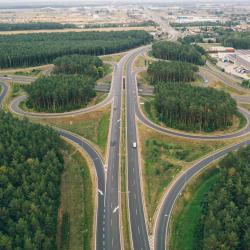How to Plan an Eco-Friendly Road Trip: Tips for Sustainable Travel
Embarking on a road trip is one of the most liberating travel experiences one can have, offering the freedom to explore diverse landscapes, discover hidden gems, and venture off the beaten path. However, with the freedom of the open road comes the responsibility to minimize our environmental impact. Eco-friendly road trips combine the thrill of travel with the sustainability our planet needs. Here's how you can plan a road trip that is both adventurous and kind to the earth.
1. Choose a Fuel-Efficient or Electric Vehicle
The type of car you choose can significantly affect your carbon footprint. Opt for a fuel-efficient vehicle, such as a hybrid or an electric car, to minimize emissions. If you're renting a vehicle, inquire about the availability of hybrid or electric options. For electric car users, plan your route with charging stations in mind. Apps and websites like PlugShare or ChargeHub can help locate stations along your route.
2. Plan Your Route Wisely
A well-planned route can reduce unnecessary driving, saving fuel and reducing emissions. Use GPS or mapping tools to determine the most efficient path to your destinations. Incorporate scenic byways and plan stops at local attractions to break up the trip and reduce fatigue-related driving inefficiencies.
3. Pack Light and Smart
Excess weight in your vehicle can decrease fuel efficiency. Pack only what you need and try to limit heavy items. Use reusable water bottles, utensils, and containers to decrease your reliance on single-use plastics during your trip. Packing a cooler with homemade snacks or meals also reduces waste and can save money.
4. Support Local and Sustainable Businesses
Whether you're stopping for gas, food, or souvenirs, opt for local businesses rather than nationwide chains. Local products typically require less transportation, thereby reducing the associated carbon emissions. Look for restaurants that prioritize locally-sourced, organic, or vegetarian options, as these are often more sustainable choices.
5. Choose Eco-Friendly Accommodation
When booking accommodations, look for places that have sustainable practices. Many hotels and motels now emphasize their eco-friendly initiatives, from energy-efficient lighting to water conservation tactics. Consider staying in eco-lodges, camping, or using platforms like Airbnb to find hosts who are committed to sustainability.
6. Embrace Digital Tools
Reduce paper waste by using digital tools for maps and itineraries. Apps can provide real-time traffic updates, help you find attractions or restaurants, and store your travel documents. This not only helps the environment but also keeps you organized without the clutter of paper.
7. Be Respectful of Nature
While it's tempting to explore off the beaten path, stick to marked trails and roads to protect delicate ecosystems. Leave no trace by picking up all your litter and avoiding areas that may be damaged by too much foot traffic. If you're camping, follow guidelines for campfire safety and wildlife interactions.
8. Offset Your Carbon Footprint
Despite efforts to minimize impact, travel inevitably leaves a carbon footprint. Consider offsetting emissions through programs that invest in renewable energy or tree planting initiatives. Websites like Carbonfund.org or Terrapass allow travelers to calculate and offset their carbon emissions easily.
Conclusion
An eco-friendly road trip requires careful planning and conscious decision-making, but it rewards travelers with a more connected and responsible travel experience. By integrating sustainable practices into your journey, you can enjoy the beauty of the world while helping to preserve it for future generations. So fuel up (with the planet in mind), gather your travel companions, and hit the road for an adventure that treads lightly on our earth.






















